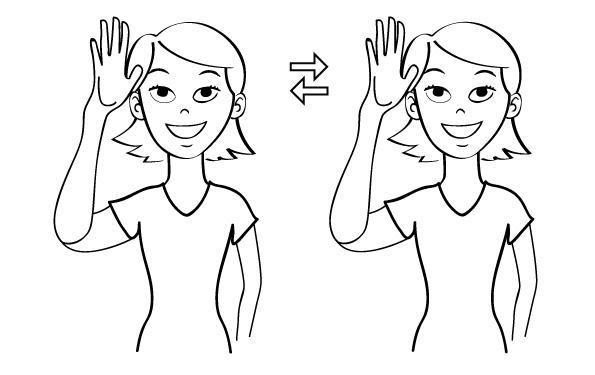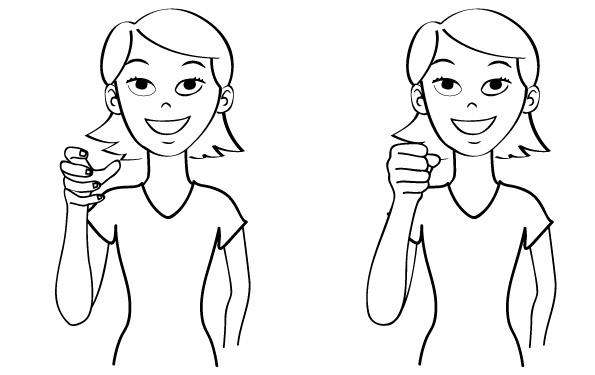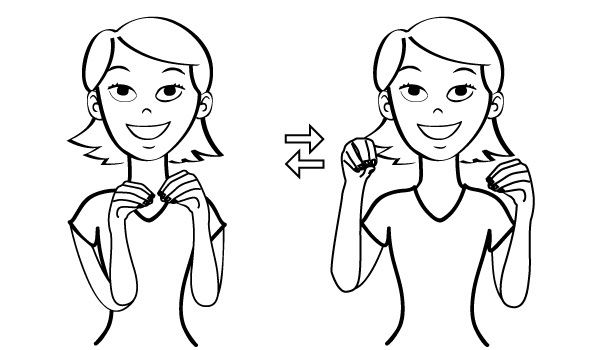We've been signing to Blondie Boy since he started solid foods. Whether or not to do baby signs with him was never really a question for me; I'd worked with children with special needs in the past had used sign language with children who couldn't verbalize what they wanted or reacted better to visual cues than audio cues.
We started with "more," "eat" and "finished." We've since added in more signs but those worked really well for us. Blondie Boy has gotten really good at using signs to let us know when he is hungry, thirsty, wants more of something or is finished and we are introducing him to more signs everyday.
When Misty Weaver the Chief Editor of Baby Sign Language approached me about writing a guest post on baby sign language I jumped at the chance. I hope you find what she has to say helpful and please share you signing experiences!
How To Introduce Baby Signs To Your Child- Misty Weaver
Baby signing is easy and fun – it’s the best way to start communicating with your pre-verbal child. When you first introduce Baby Signs to your child, it’s best to begin with signs you can use on a daily basis, such as Mommy, Daddy and Milk. Signs that represent something concrete and meaningful to your baby are easier for him to learn – begin with these starter signs then build up your repertoire to include other objects, ideas and emotions.
How To Introduce The Signs
You need to make the appropriate sign each time you say the relevant word to your baby. It’s important to say the word that goes with the sign as well. Say it clearly, with good eye contact, while signing, then point to the thing or person you are describing. At first, try to sign when your baby is alert and not fussing, using an object which is exciting to him, such as Milk or Mummy. Practice the signs beforehand so you feel confident and clear about what you are doing.
Repetition
Repetition is key with Sign Language For Babies. Be sure to make the sign and say the word each time you do an action or use an object. Your baby will learn the signs through repetition (and so will you), and soon it will be natural for him to sign back.
Be Patient
Don’t expect too much too soon. Your baby is unlikely to be signing for his milk when he is only 4 months old and you’ve been signing with him for a week! Research by Dr. Joseph Garcia, a founder of baby sign language, says that a typical baby who starts learning signs at seven months old needs about two months of repetition and exposure to a sign before starting to use it.
The First Signs For You To Introduce To Your Child
MOMMY
We started with "more," "eat" and "finished." We've since added in more signs but those worked really well for us. Blondie Boy has gotten really good at using signs to let us know when he is hungry, thirsty, wants more of something or is finished and we are introducing him to more signs everyday.
When Misty Weaver the Chief Editor of Baby Sign Language approached me about writing a guest post on baby sign language I jumped at the chance. I hope you find what she has to say helpful and please share you signing experiences!
How To Introduce Baby Signs To Your Child- Misty Weaver
Baby signing is easy and fun – it’s the best way to start communicating with your pre-verbal child. When you first introduce Baby Signs to your child, it’s best to begin with signs you can use on a daily basis, such as Mommy, Daddy and Milk. Signs that represent something concrete and meaningful to your baby are easier for him to learn – begin with these starter signs then build up your repertoire to include other objects, ideas and emotions.
How To Introduce The Signs
You need to make the appropriate sign each time you say the relevant word to your baby. It’s important to say the word that goes with the sign as well. Say it clearly, with good eye contact, while signing, then point to the thing or person you are describing. At first, try to sign when your baby is alert and not fussing, using an object which is exciting to him, such as Milk or Mummy. Practice the signs beforehand so you feel confident and clear about what you are doing.
Repetition
Repetition is key with Sign Language For Babies. Be sure to make the sign and say the word each time you do an action or use an object. Your baby will learn the signs through repetition (and so will you), and soon it will be natural for him to sign back.
Be Patient
Don’t expect too much too soon. Your baby is unlikely to be signing for his milk when he is only 4 months old and you’ve been signing with him for a week! Research by Dr. Joseph Garcia, a founder of baby sign language, says that a typical baby who starts learning signs at seven months old needs about two months of repetition and exposure to a sign before starting to use it.
The First Signs For You To Introduce To Your Child

To sign Mommy extend and spread apart your fingers. With your pinkie facing forward, tap your thumb on your chin.

To sign Daddy, extend and spread out your five fingers on your strong hand. Tap your hand on your forehead. Done right you will look like a turkey.

The sign for Milk is a lot like milking a cow, but without the vertical motion – you are just squeezing the udder. Take both hands, make them into a fist, relax, and repeat. You will notice most babies have trouble moving their fingers together this way, but any kind of repeated squeezing and relaxing of the hand is likely Milk.

To do the sign for More, flatten out your hands then bring your thumbs under to make an O shape. Then, bring your hands together and separate them repeatedly. Baby will often simplify More by clapping their fists together. As they get older and more proficient you may want to encourage the more correct sign of flattening out their hands and creating the O shape with their thumbs as a fun way to help them develop fine motor skills.

I too am like you, worked with special needs and used sign language. I used a little with Baba and he loved it still does a few signs now, not ones we taught him ones he sees on tv! xx
ReplyDeleteI have always wondered about this. Little M isn't speaking very well and I started using my own make up signs to get the point across. Will have to give it a try :)
ReplyDeleteMaria
I love this idea. I did a basic sign language course a while back but never thought of signing for my children when they were babies. Think all kids should learn the basics so it seems routine when it is used for those with additional needs.
ReplyDelete